|
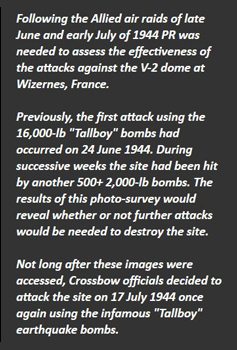
|
Below is the crews
report taken from RAF No. 540 Squadron
(PR) Operation Record Book for the sortie
run-in at Wizernes V-2 rocket bunker
installation on 10 July 1944.
Source: Mick
Gladwin |
airrecce.co.uk (Mick passed
away suddenly in 2017 during work on this
project)
Date: 10
July 1944, Sortie No.106G/1347, 10 July 44,
Camera; f/8”, A/C (MM.355)
Pilot: F/Lt. King,
Navigator: F/Sgt. Bowden
Target: Low level
recce of rocket site at Wizernes
Unit: No. 540
Photoreconnaissance Squadron, RAF Benson,
Oxfordshire
Aircraft: de
Havilland Mosquito Mark XVI
Report: 11:40 take off,
then set course for Bradwell flying at
2,000 ft., below cloud cover 10/10
(stratocumulus cloud). At Bradwell
altered course for D.R. (dead
reckoning) position in the Channel,
and then onto D.R. position for
Hardelot (France), reducing height to
fly on the deck with navigation by map
and stopwatch (all on the clock).
Visibility was poor but we sighted
Boulogne and turned in at Hardelot,
flying at 20 to 50 ft. Just before
estimated time of arrival at Wizernes
we plotted position over little
village of Lunbres, we circled, and
then proceeded to Wizernes, nipping
over the railway line with the camera
nose oblique, we then continued on to
the rocket site. We were at 2,850
revolutions, at +12 (loud), which
really made the froggy workmen duck
and run. One guy took a header into a
hedge. After covering the target we
set course for Bradwell, staying on
the deck until we were over the
Channel, and then up to 1,500 ft.
Landed at base 13:30. It was a "wizzo
trip" (great flight) with some good
pictures.—F/Sgt. W. Bowden
|
|

V2ROCKET.COM presents these rare and fascinating
images courtesy of the late Mick Gladwin.
The details related on the photos are
impressive. They show the low-level Mosquito
flight by 540 Photoreconnaissance Squadron and
the diminutive features that were revealed over
the French countryside, along with the
construction workings of the massive V-2 bunker
project. These RAF
images were obtained years ago and only now
have been restored.
For decades these images had been
located in the holdings of the JARIC
RAF Reconnaissance archive. During that
period the images were accessed hundreds of
times. The wear and tear of mishandling had
caused thousands of blemishes and scratches all
over the image surfaces. It has taken several
years of work to restore the images you see
here. There are still some images remaining that
haven't been restored, but these will be added
over time as they are completed, as Mick would
have wanted.

|
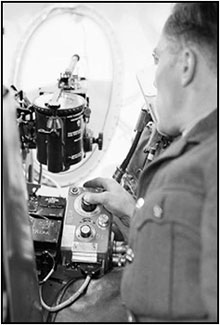
|

AirRecce.co.uk | Crown
Copyright OGL (Open Government License)
| Originally on
nitrate based film, these images were
transferred to safety film as either positives
or negatives in the 1960's. The images shown
here were scanned from a positive image. One of
the photos (0034) is contained in the Air
Ministry files at the National Archives in
London. It has been seen many times in books and
documentaries. However, all of the other images
have been lost during the past quarter-century.
These fast-action images were taken
using the Mosquito f/8 camera. Designed to use
9" wide film, but to have a 7" X 7" image format, the
older f/8 camera is often misidentified as being
the more popular f/52 camera. |

Comparison
Photos from
Wizernes 2014
(Photos by Ed Straten)




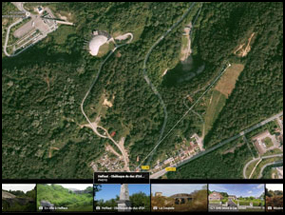
|
Column
Helfaut
As the Mosquito rose over the dome at
Wizernes, the last few photos captured by the
crew show a battered monument standing forlorn
at the edge of the quarry. The column or
obelisk "Helfaut" is a memorial built in
memory of the death of the Duke and Prince of
Orleans, near Saint-Omer, on the plateau of
Helfaut.
The obelisk was
built between August 11 and August 20,
1842, in memory of Prince and Duke
Ferdinand-Philippe d'Orleans—one of the 10
sons of King Louis-Philippe. The
column almost disappeared during WWII due to
the heavy bombardment of the Wizernes site. It
wasn't until 1990 that efforts were made to
renovate the monument.
https://fr.wikipedia.org/wiki/Colonne_d'Helfaut
|
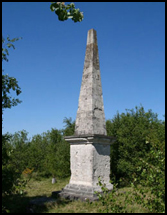
|


The Mosquito PR Mk XVI had a pressurized
cockpit and was powered by two
Rolls-Royce Merlin 72/73 or 76/77 piston
engines. This version was equipped with
three overload fuel tanks, totaling 760
imperial gallons (3,500 L) in the bomb
bay, and could also carry two 50
imperial gallons (230 L) or 100 imperial
gallons (450 L) drop tanks.
A total of 435 of the PR Mk
XVI were built. The PR Mk XVI had a
maximum speed of 415 mph (668 km/h), a
cruise speed of 250 mph (400 km/h),
ceiling of 38,500 ft (11,700 m), a range
of 2,450 nmi (4,540 km), and a climb
rate of 2,900 feet per minute (884 m). |
|
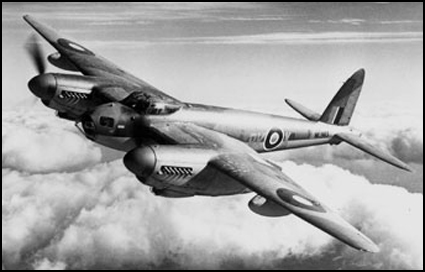 |
Related Video
|




